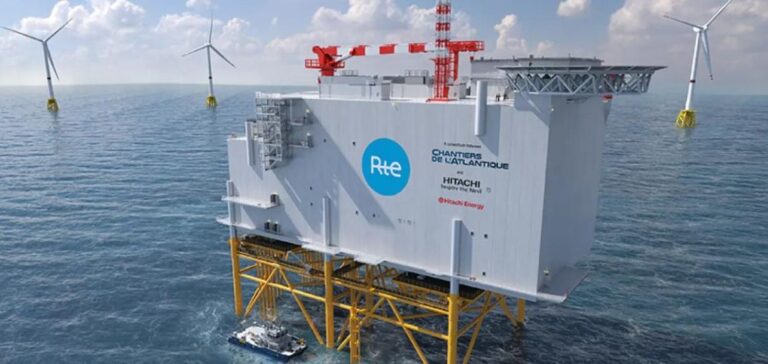In a key period for the energy transition, RTE, as operator of France’s high-voltage power grid, is playing a pivotal role in the integration of renewable energy sources. The historic agreement signed during the visit of French Minister of the Economy Bruno Le Maire for the construction of three advanced electric platforms marks a decisive step forward. These facilities will serve as the backbone of the Normandy and Oléron offshore wind farms, illustrating France’s ambition to reduce carbon emissions while increasing the share of renewable energy in the French energy mix.
Innovative capabilities of new platforms
The planned electrical platforms will feature direct current (HVDC) technology, enabling more efficient power transmission over longer distances than traditional AC systems. This technology is particularly well suited to new offshore wind farms, which are often located further offshore to exploit stronger, more constant winds. With a capacity of 1,250 MW each, these platforms can feed large quantities of energy into the terrestrial grid, supporting the electrification of many regions.
Impact on the maritime and energy sectors
The choice of Chantiers de l’Atlantique to build these platforms underlines the importance of the shipbuilding industry in our energy strategy. These shipyards, which are among the largest in Europe, will benefit from substantial investments to increase their production capacity. The extension will include new facilities, such as Europe’s largest paint cell, essential for processing the large structures required for HVDC platforms.
Local and European economic benefits
The agreement between RTE, Chantiers de l’Atlantique and Hitachi Energy is not only a boost for the energy industry, but also a significant economic driver. Almost half of the economic benefits of this project will be felt in France, with a notable impact on local employment and industrial development. This initiative is part of a drive to strengthen Europe’s energy autonomy and support local manufacturing industry.
France’s role in offshore renewable energy
This project places France at the heart of the development of offshore renewable energy in Europe. Efforts to position itself as a leader in the construction of cutting-edge maritime infrastructures are crucial to achieving the EU’s climate objectives and stimulating technological innovation in the energy sector. Hitachi Energy’s expertise in HVDC technologies complements that of Chantiers de l’Atlantique, forming a strategic partnership that could serve as a model for other international projects.
RTE’s contract with Chantiers de l’Atlantique and Hitachi Energy symbolizes a turning point in the French and European approach to offshore renewable energy production. This project not only boosts the local economy and strengthens the energy sector, but also positions France as a key player in the future of offshore energy. The transition to cleaner, more sustainable energy is underway, and this project is a key part of it.






















